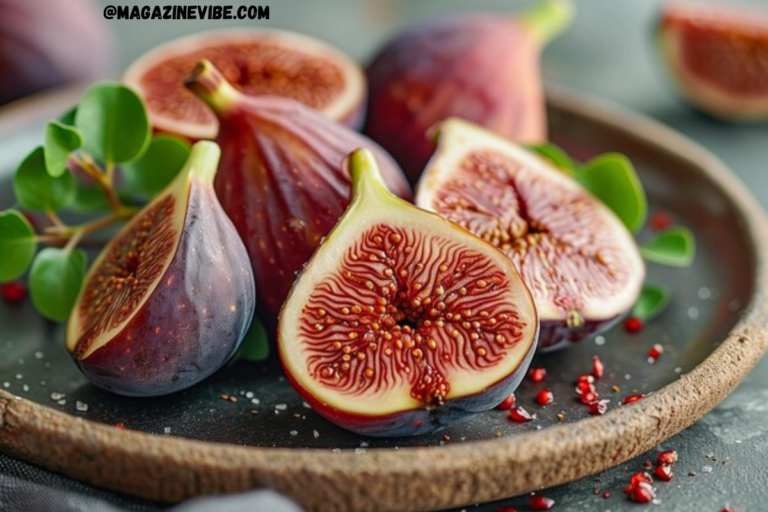Introduction to Figù: What It Is and Why It Matters
Figù is a special term used in certain communities. It can mean different things depending on where it is used. In some places, figù could be a traditional item or a local word. It might be important to the people who use it, because it connects them to their culture. Figù may also be tied to old customs, making it part of their history.
The historical and cultural relevance of figù goes back many years. People have used figù in their daily lives or during important events. Some believe that figù is more than just a word or item. It can carry deeper meaning, representing a group’s beliefs or way of life.
There are some common misconceptions about figù. People might think figù is not important or that it is outdated. Others might confuse figù with something else. But for those who value it, figù is still a big part of their traditions. It helps them stay connected to their roots.
The Origin and Meaning of Figù
The word figù has its roots in local dialects. Its etymology comes from ancient language used by specific communities. Over time, the meaning of figù might have evolved, but its core idea stayed the same in many regions.
The origins of figù trace back to areas where people have kept strong ties to their traditions. It is commonly used in certain towns or villages. These places value figù as a symbol of their heritage. Sometimes, it is more common in rural areas where old customs are still practiced.
In modern-day usage, figù may not be as widespread, but it remains important for those who continue to honor their culture. People might use figù in festivals, family gatherings, or other community events. Even though times have changed, figù stays alive through these traditions and practices.
Uses and Applications of Figù
Figù has various practical uses depending on the region and its meaning. If figù is a product, it might be used in daily tasks or special events. For example, it could be something used in homes for decoration or in traditional ceremonies. If figù is a tool, it could serve a unique purpose in local craftsmanship or agricultural activities. If it’s a concept, figù may represent values or beliefs that guide people’s actions.
The most popular areas where figù is applied are often cultural festivals, community gatherings, and certain trades. People might use figù to preserve their customs or pass down their traditions to the next generation. In some cases, it could be a key part of how local artisans create handmade items.
There are several examples of figù being used effectively in real life. For instance, in one village, people use figù to celebrate an annual festival that attracts visitors from all around. This helps the community share their culture and strengthen their identity. Another example could be a craftsman who uses figù as part of their process to make unique, high-quality items that reflect their heritage.
Benefits and Advantages of Using Figù
Figù offers several benefits, especially in the areas of culture and tradition. Culturally, figù helps keep ancient customs alive. It connects people to their roots and allows them to celebrate their heritage. This sense of identity can bring communities together, strengthening social bonds. In some cases, figù may also have economic benefits, as products or practices related to figù can be sold or showcased during festivals, bringing income to local artisans or businesses.
People choose figù over alternatives because it represents something unique and authentic. It’s not just a tool or concept, but a symbol of tradition and pride. For those deeply rooted in their culture, figù holds more value than modern alternatives because it keeps their heritage alive.
Though there may not be scientific studies specifically on figù, experts on culture and tradition often emphasize the importance of such elements in preserving the identity of a community. These experts agree that cultural symbols like figù play a key role in maintaining the history and shared values of a group.
Common Myths and Misunderstandings About Figù
Myths and Misconceptions:
- Myth: Figù is outdated and no longer relevant in modern times.
- Fact: While some traditions evolve, figù continues to play a key role in cultural and traditional practices. Communities still use it to maintain their heritage.
- Myth: Figù is only for older generations.
- Fact: Many younger people are reconnecting with their roots and incorporating figù into their lives. It is seen as a way to preserve cultural identity across generations.
- Myth: Figù has no real value outside local traditions.
- Fact: Figù holds cultural, emotional, and sometimes economic value. It is often used in festivals, and as part of craftsmanship, it can help support local economies.
Why These Misconceptions Exist:
Many misconceptions about figù arise because of modern lifestyles, which sometimes overlook the importance of cultural traditions. Some people may not understand the value of figù because they are less familiar with the customs and history that give it meaning. In some cases, lack of education or exposure to figù leads to misunderstandings about its purpose and relevance.
Figù in Popular Culture or Tradition
Representation in Folklore, Culture, and Modern Media:
Figù is often represented in folklore as a symbol of tradition and heritage. In stories and tales, figù may be connected to local heroes, historical events, or spiritual practices. Though it may not always appear in mainstream media, figù can still be found in documentaries, local films, and cultural programs focused on preserving tradition.
Traditions or Festivals Featuring Figù:
Figù is commonly featured in festivals that celebrate local culture. These events often showcase figù as part of traditional clothing, rituals, or performances. Festivals may center around the use of figù in crafts, dance, or food, helping to keep the practice alive in modern times.
Role of Figù in Local and International Celebrations:
In local celebrations, figù plays an important role by connecting people to their cultural identity. It is often used as a key element in ceremonies or as part of the decorations and rituals that make festivals special. Internationally, figù might be displayed during cultural exchange programs, fairs, or exhibitions, where it represents the unique heritage of a specific region or community. This helps spread awareness about figù and its importance globally.
Sustainability and Ethical Considerations Surrounding Figù
Is Figù Sustainably Sourced or Produced?
The sustainability of figù depends on its origin and the methods used to produce it. If figù is a crafted object or product, some artisans may use traditional, eco-friendly materials. In many cases, figù is produced in small quantities using locally sourced materials, which supports sustainable practices.
Environmental Impact of Figù-Related Practices:
The environmental impact of figù largely depends on how it is made. In communities that prioritize sustainability, figù is often created using materials that are natural or renewable, like wood, clay, or organic fibers. These materials have a lower environmental footprint compared to mass-produced industrial goods. However, if production methods shift toward commercialization, there could be negative environmental effects, such as overuse of resources or pollution.
Ethical Debates or Discussions Surrounding Figù:
Ethical considerations may arise if figù is commercialized without respecting the cultural traditions it represents. Some believe that turning figù into a mass-produced item could exploit the cultural heritage it is tied to. This could lead to debates about whether figù should be used in a more controlled, community-driven way to prevent cultural appropriation or exploitation. Additionally, ethical concerns can emerge when figù is not fairly sourced or if local artisans are not compensated properly for their work.
Where to Buy or Experience Figù
List of Places or Markets Where Figù Can Be Purchased or Experienced:
Figù is often found in local markets, craft fairs, or cultural festivals. These events are ideal for purchasing authentic figù items directly from artisans or experiencing it in its traditional context. Additionally, specific regions known for their cultural heritage may have dedicated shops or markets where figù can be found.
Online Marketplaces or Local Vendors:
For those unable to visit local markets, some artisans and vendors sell figù through online platforms. Websites focused on handmade or traditional goods might offer figù for sale. These platforms often connect buyers directly with the creators, ensuring authenticity. Examples of such online marketplaces include Etsy or region-specific e-commerce sites. Some local vendors also have their own websites or social media pages where they sell figù.
Pricing and Availability of Figù Across Different Regions:
The pricing of figù can vary depending on its rarity, the materials used, and the location where it is sold. In areas where figù is common, prices may be lower, especially if it’s a part of daily life. In contrast, if figù is rare or has significant cultural value, it may be priced higher. Availability also depends on the region—figù might only be available in certain localities, though online platforms can help distribute it more widely.
How Figù Compares to Other Similar Concepts/Products
Comparison of Figù with Similar Terms, Tools, or Ideas:
Figù can be compared to other traditional items, tools, or concepts that hold cultural significance. For instance, if figù is a handcrafted object, it might be similar to other artisanal products made with traditional methods, such as handmade pottery or textiles. In terms of symbolism, figù could be compared to cultural symbols or artifacts from other regions, such as Native American dreamcatchers or Japanese origami, which also carry deep meaning and are tied to heritage.
Compared to mass-produced items, figù typically stands out for its uniqueness and cultural authenticity. Unlike factory-made products, figù is often crafted by hand, with each piece carrying its own distinct characteristics that reflect local traditions.
Pros and Cons of Figù vs Alternatives:
Pros of Figù:
- Cultural Significance: Unlike alternatives that may lack a deep connection to tradition, figù represents a rich cultural heritage.
- Handcrafted Quality: Figù is often handmade, offering a higher quality and uniqueness compared to mass-produced items.
- Sustainability: Many figù items are made using sustainable materials and methods, which is an advantage over alternatives that might use synthetic or harmful materials.
- Support for Local Artisans: Purchasing figù helps support local craftsmen, keeping traditional skills alive and benefiting local economies.
Cons of Figù:
- Limited Availability: Figù might be harder to find in areas outside its region of origin, whereas alternatives are often widely available in stores or online.
- Higher Cost: Due to its handcrafted nature, figù can sometimes be more expensive than mass-produced alternatives.
- Fragility: If figù is made from delicate materials, it may not be as durable or practical as modern alternatives made with industrial methods.
Conclusion
Figù is more than just a product or tradition; it represents a deep connection to culture, heritage, and craftsmanship, making it a valuable part of many communities. Its handcrafted quality, cultural significance, and sustainable practices set it apart from modern alternatives. For those who appreciate authentic traditions and want to support local artisans, figù offers a unique way to connect with history and preserve cultural identity. If you’re interested in exploring figù further, consider visiting local markets or online platforms to experience this meaningful tradition firsthand and become part of the effort to keep it alive.
FAQs
Q. What exactly is Figù?
Figù can refer to a cultural item, tool, or concept, depending on the region and context. It often holds deep significance in traditions and practices.
Q. Where can I buy or experience Figù?
You can find Figù in local markets, festivals, or craft fairs, and some artisans sell it on online platforms such as Etsy or region-specific websites.
Q. Is Figù still relevant today?
Yes, Figù continues to be important in communities that value tradition, and it plays a key role in cultural festivals and celebrations.
Q. How is Figù different from similar products?
Unlike mass-produced alternatives, Figù is typically handcrafted, offering higher quality, cultural significance, and sustainability.
Q. What are the environmental benefits of Figù?
Many Figù items are made using eco-friendly, locally sourced materials, making them a sustainable option compared to industrially produced goods.
Q. Can anyone use Figù?
While Figù is often tied to cultural practices, anyone can appreciate and use it respectfully, especially if they wish to learn more about the traditions behind it.
Q. Why is Figù more expensive than mass-produced items?
Because Figù is often handcrafted with care, it can be more expensive than mass-produced alternatives, but the price reflects its quality and cultural value.
Q. How can I learn more about Figù?
You can explore Figù by attending local festivals, talking to artisans, or researching its cultural significance online and through community resources.


